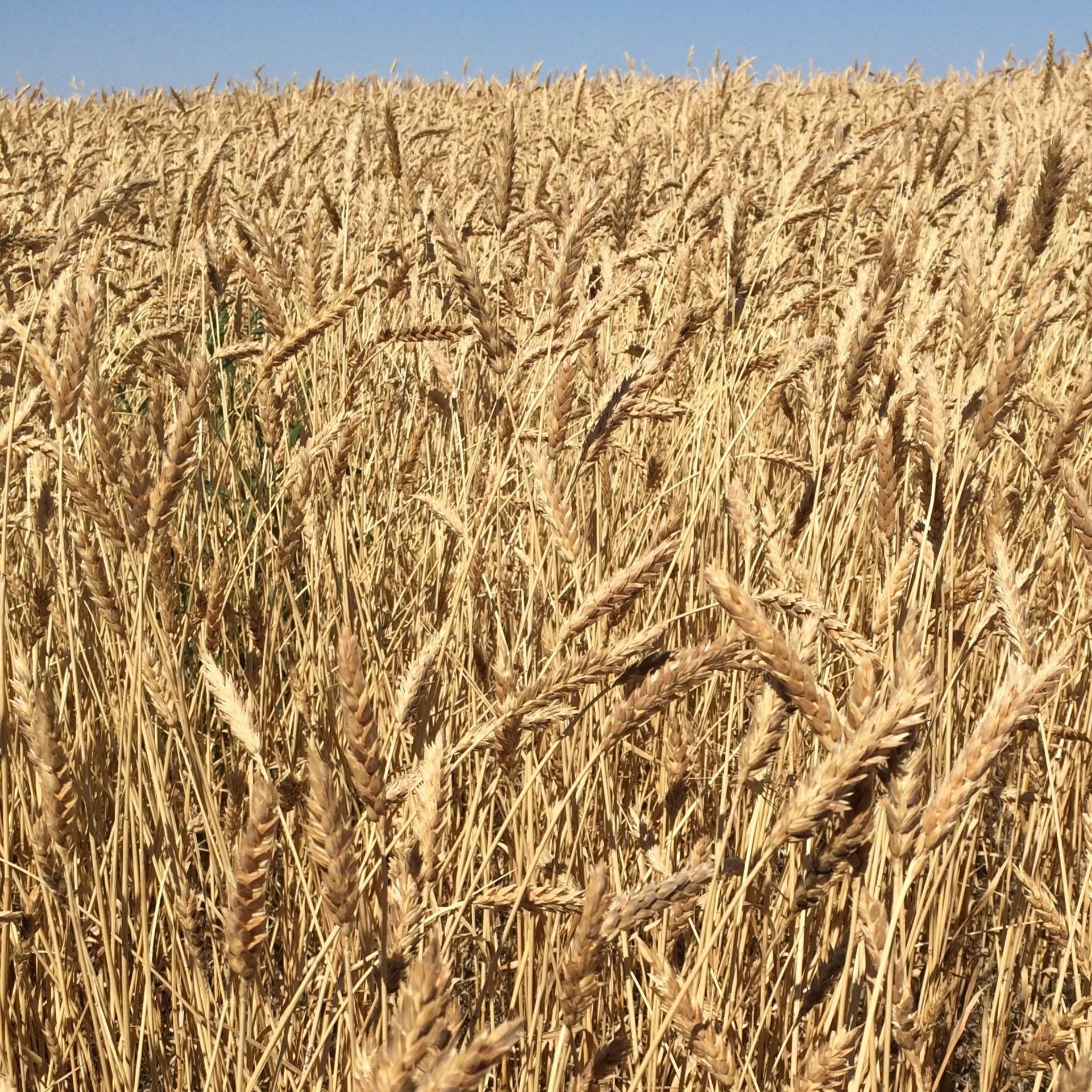White Sonora Wheat
Learn About the America’s First Wheat Variety
White Sonora Wheat is one of North America’s oldest and most storied grain varieties. Culinary historians believe White Sonora wheat to be the first cereal grain introduced to America as it arrived with 16th century Spanish settlers to the New World. This flavorful Mediterranean soft white wheat was widely grown across central Mexico and reached missions in present day New Mexico and along the El Camino Real in present California as early as the 1700s. The following century, White Sonora reached the Oregon Country where pioneers named it for the pure color of its nutritious kernels.
Palouse Heritage White Sonora produces a naturally sweet, buttery-tasting flour and has long been prized for flatbreads, frybreads, biscuits, and pastries.
Check out our recipe ideas featuring White Sonora and tips for baking with heritage grains.
We also have several blog posts featuring White Sonora Wheat.
White Sonora protein: 11.8% (USDA inspection results)
Scientific Name & Genetic Details
White Sonora Wheat is classified as a form of common bread wheat, Triticum aestivum, the hexaploid species widely grown across the globe. Within that species, White Sonora is a heritage land-race or heirloom variety, distinguished by its “soft” kernel texture and white or pale grain color rather than the typical red-hued varieties. The kernel hardness and protein/gluten profile are lower than many modern hard wheats: the “soft white” classification indicates a lower gluten strength and protein content, making it particularly suited to pastries, flatbreads and gently textured baked goods. Although detailed modern genetic-mapping of White Sonora is limited, it has played a role in wheat breeding: for example the cultivar Sonora 64 used White Sonora germplasm in drought-adaptation work.
Grain Characteristics & Cultivation Techniques
White Sonora Wheat features a round-seeded grain, pale colored with a slight blush of pink, and reddish-brown glumes (outer chaff) in many cases. As a “soft white” wheat, it tends to have lower gluten strength and protein than hard wheats, making its flour lighter, more tender, and particularly well suited to flatbreads, biscuits, and pastries.
In terms of cultivation, it thrives in arid or semi-arid landscapes and is known for drought tolerance, disease and rust resistance, and suitability for low-input or dryland farming systems. In the Southwest borderlands, it is often sown in late fall (November–January) and harvested in late spring (May–June) before the summer rains. But in colder climates like what we experience in the Pacific Northwest, we treat it as a spring wheat, meaning that we plant it in the spring and harvest in between July and September. The recommended seed rate varies, but 70–100 lbs per acre (~35-49 seeds per square foot) is normal. Because of its early maturity and wide leaves in some cases, White Sonora can shade out weeds and compete well in low-fertility soils.
Origins
The direct origins of White Sonora trace back to wheat introduced by Spanish explorers and missionaries into what is now northwestern Mexico and the U.S. Southwest. The general arrival of cereal grains in the New World dates to 1493 when Christopher Columbus brought wheat and barley to Isabella, Puerto Rico to feed his expedition and livestock. While those early Spanish grains did not thrive well in the humid Caribbean, they spread into Mesoamerica and northward. Shortly after the conquest of Mexico City in 1521, Spanish explorers found wheat seeds among rice sacks and directed cultivation in huertas (garden plots). By the late 16th century wheat had moved into the fertile plains of Spanish-dominated Oaxaca and beyond. In the late 1700s Jesuit missionaries introduced soft white spring wheats such as Pima Club and White Sonora (sometimes called “Yellow Sonora”) to the Pima peoples of present-day New Mexico. These introductions set the stage for White Sonora’s adaptation to desert and semi-arid environments, enabling its establishment in the Sonora/Southern Arizona region.
History in North America (Including Pacific Northwest)
White Sonora Wheat established itself as a crucial grain crop in the Southwest U.S. and northwestern Mexico. Within the borderlands region it complemented indigenous agricultural systems by enabling a winter/spring crop cycle, allowing farmers to grow wheat when summer crops lay fallow. For example, the Akimel O’odham on the Gila River embraced this wheat rotation and used it alongside their traditional corn, beans and squash systems. By the 19th century the Pima and other indigenous farmers were exporting large amounts of White Sonora wheat eastward; historical reports indicate massive production (e.g., up to 700,000 pounds per year by the late 1700s in the region) and even credit the grain with helping feed Union and Confederate troops during the American Civil War.
In the broader West, California’s Central Valley and Arizona’s Gila and Salt River valleys became breadbaskets in part thanks to this wheat. Though the original seed is tied to Sonora/Mexican origins, White Sonora reached the Pacific Northwest region (e.g., Oregon Country) by the 1850s and was among early varieties grown by settlers. However, by mid-20th century, changes in irrigation, mechanization and the dominance of high-yield modern hard wheats contributed to a decline of White Sonora’s commercial footprint. More recently, heritage-grain efforts and local food movements have revived interest in its adaptation, flavor and low-input cultivation potential. Today, more consumers are rediscovering the remarkable advantages of heritage grains like White Sonora—varieties that offer superior flavor, nutrition, and diversity compared to the modern hybrids that currently dominate our grocery stores and food system overall.
Culinary Uses
White Sonora Wheat’s low-gluten and soft-kernel profile make it well suited to pastry, flatbreads, biscuits and tortilla-type breads. In the Sonoran borderlands it played a pivotal role in the development of flour-tortilla culture: the pliable dough from its flour allowed oversized tortillas, burritos and related regional dishes to become staples. In addition to being milled into flour, the whole wheat berry can be cracked or cooked whole for use in grain-salads, soups or stews (for example posole or pinole) and is also being used by craft brewers for wheat-beer styles thanks to its sweet, nutty flavor. Because it produces a light-colored and softly-textured flour, White Sonora is prized by artisan bakers seeking a heritage grain with both flavor and a delicate crumb structure.
References
Slow Food USA. “White Sonora Wheat: Adding Heritage Grains into the Local Foods Mix.” Slow Food USA
Native Seeds/SEARCH. “White Sonora Wheat.” Native-Seeds-Search
Kruse-Peeples, Melissa. “Heritage Sonoran Wheat: History, Growing, and Harvesting.” Native Seeds/SEARCH blog. Native-Seeds-Search
Underwood Gardens. “White Sonora Wheat – Perfect Grain for the Home Gardener.” Terroir Seeds | Underwood Gardens
Gardenerd. “Growing White Sonora Wheat.” Gardenerd
Good Food Finder AZ. “White Sonora Wheat: A Real Taste of Arizona.” Devour Good Food
Arizona Highways. “Grains Supreme.” Arizona Highways
SARE Project OW12-010 Final Report. SARE



